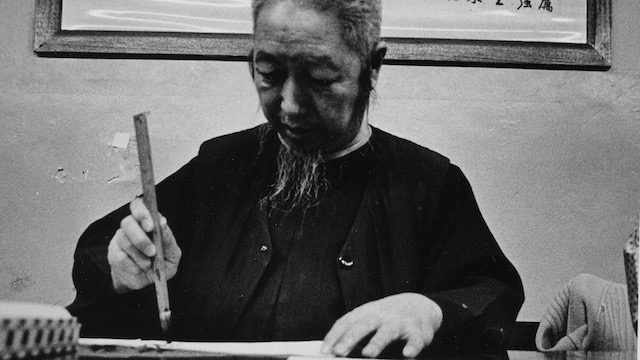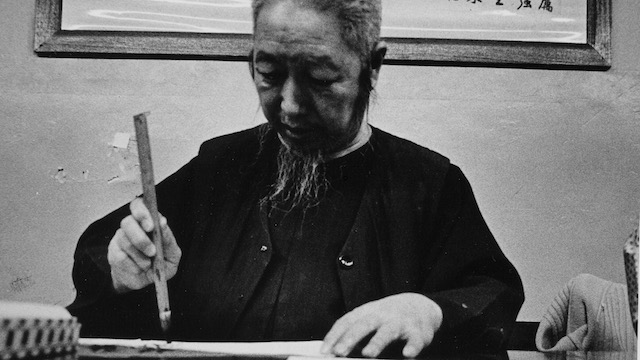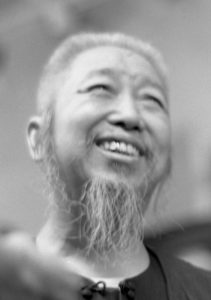Cheng Man Ching on the dao of Taijiquan – a poem
Cheng Man Ching is portrayed by his students as an example of total dedication and commitment to the Chinese Arts, especially concerning Taijiquan.

Indeed, while also advocating the health aspects of Taijiquan and its use for self-defence, Cheng Man Ching saw the aspect of self-cultivation in Taijiquan as a separate important task. He drew a strict line between practising, repeating, copying and real self-cultivation. The latter for him did not automatically come along as an extra bonus. Self-cultivation lies beyond the physical or mental benefits of Taijiquan and the discussion about its (im)practicality for self-defence.
Following the dao of Taijiquan requires perseverance and serious study in its own right. Cheng Man Ching himself observed that disregarding functional applicability while learning Taijiquan creates at best artificial health benefits. One is tempted to add that to expect the maturity of character to develop just by religiously training body and mind in form and partner exercises might prove to be an equally artificial attitude.
But what is the way of Taijiquan self-cultivation? As it was done before in historical examples like the Daodejing or the Taiji Classics, Cheng Man Ching made use of a poem to express what the dao of Taijiquan meant to him:
T A I C H I
TAI CHI CHUAN HAS NO OPINION. IT HAS NO INTENTION. IT IS AN IDEA WITHOUT MOTIVE.
IT IS AN ACT WITHOUT DESIRE. IT IS, PROPERLY, THE NATURAL RESPONSE TO AN OUTSIDE FORCE, NOT BEING PERCEIVED AS SUCH.
FOR IN NATURE, ALL ARE THE SAME, EVERYTHING IS ONE. THAT WHICH ATTACKS IS THE SAME AS THAT WHICH RESPONDS, THE SAME FORCE – REDIRECTED AND RECYCLED.
WHEN YOU INITIATE AN ILL-INTENTIONED MOVE, IT COMES BACK ON YOU.
THE PRINCIPLES OF TAI CHI ARE THE SAME PRINCIPLES BEHIND THE INNER MECHANISM OF THE GREAT ENGINE OF THE UNIVERSE.
CHENG MAN CH’ING
Video “A poem by Prof. Cheng Man Ching”
Ken van Sickle is reading the poem of his teacher Prof. Cheng Man Ching. You will find more related posts on this website. See also our Youtube channel for playlists on Cheng Man Ching Tai Chi Chuan and Ken van Sickle.
Professor Cheng Man Ching Series
Cheng Man Ching was also named the “Master of Five Excellences“. He was one of the first who taught Taijiquan in the West and his Taijiquan style is spread all over the world. Here you will find many articles about his teaching and how it is taught by his his students.
Cheng Man Ching’s way of teaching (4): On being a masterCheng Man Ching’s teaching was marked by underlining sameness and diversity at the expense of hierarchy and difference. This approach formed the basis of his unique way of bridging the cultural gap between East and West.
Cheng Man Ching’s way of teaching (3): On meditation Our idea of meditation is mainly influenced by two aspects, the visual and the practical aspect. The mind’s uniform picture of a meditating person is someone sitting still in a peaceful environment, in a monastery or on a mountain.
Cheng Man Ching’s way of teaching (2): The Dantian The discussion about the nature of the Dantian is old and it remains unresolved until today: Is the Dantian a bodily, material reality or an ideal concept of Traditional Chinese Medicine to explain certain psychosomatic correlations? The debate cannot simply be described as a conflict between East and West or between Tradition and Modernity.
Cheng Man Ching’s way of teaching (1): “I am not a guru.” Cheng Man Ching, student of Yang Chengfu, came to New York in the 60s, at first teaching Taijiquan in the Chinese community, later also teaching Westerners. Being a university professor from a family of scholars and deeply rooted in traditional Chinese culture, he was confronted with flower children searching for a guru.
Cheng Man Ching on the dao of Taijiquan – a poem Cheng Man Ching is portrayed by his students as an example of total dedication and commitment to the Chinese Arts, especially concerning Taijiquan.
Author: Taiji-Forum
Images: Ken van Sickle


